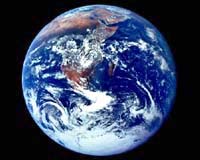
 |
The US capital's newest museum aims to throw a light on some of the big mysteries of science as it seeks to explain climate change and how DNA can also be used to stop epidemics, prevent diseases and improve crops.
It hopes "to show how science is relevant to the general public in their daily life," museum founder Dan Koshland told reporters in a press conference at the National Academy of Sciences.
The museum offers state-of-the-art exhibitions, such as sliding plasma screens, over 6,000 square feet (550 square meters) in central Washington. It opened on Friday.
Supported by the National Academy of Sciences (NAS) which wants to boost youngsters' interest in science, it also features displays enabling visitors to flood the Chesapeake Bay east of Washington in an imaginative interactive display exploring the possible threats posed by climate change.
It seeks to show the consequences of human action on the climate as well as illustrating how the world has warmed in recent years, according to the museum.
"We've been trying to bridge two cultures, the culture of the scientists and the culture of museum designers to make it attractive and comprehensible," said NAS president Bruce Alberts.
Other displays show how the FBI can use DNA samples found at a crime scene to nab and convict criminals, if the DNA is found to match a suspect's own body matter.
Washington's latest museum will have to compete with the numerous national museums already lining the National Mall, the newest of which -- The National Museum of the American Indian -- is due to open in September.
TERRA.WIRE |